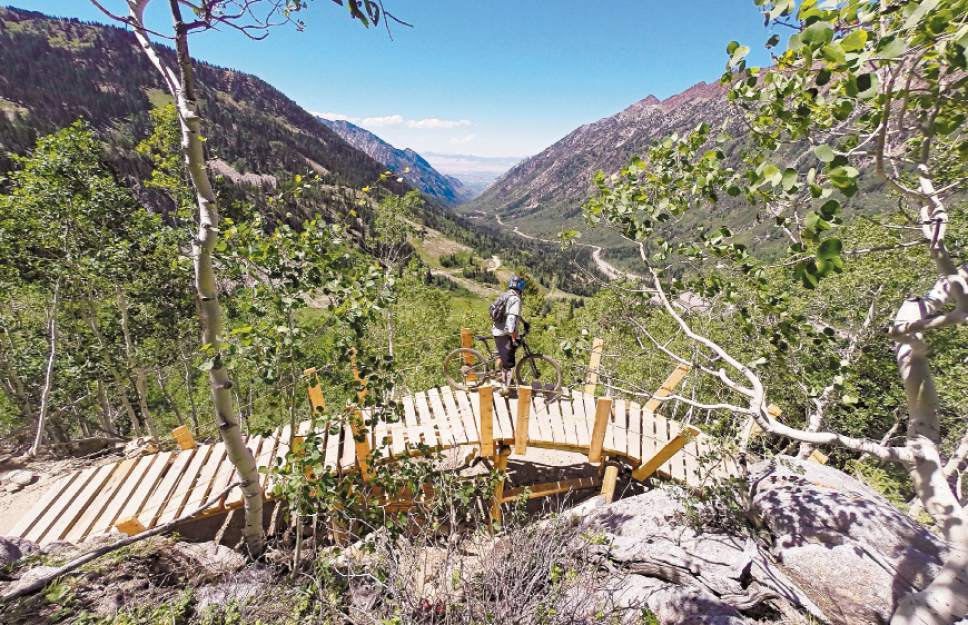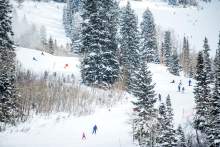This is an archived article that was published on sltrib.com in 2017, and information in the article may be outdated. It is provided only for personal research purposes and may not be reprinted.
The Salt Lake County Council has heard all of the official rationale behind proposed ordinances governing ski resorts and other land uses in the foothills and canyons.
At 5 p.m. Tuesday, the council will get a chance to hear what the public thinks about the ordinances, designed to set development standards in these sensitive areas for decades. The ordinances were crafted, said planning staff member Curtis Woodward, to strike a balance between environmental protection and private property rights, recognizing a link between the health of the environment and its potential contributions to the county's economic prosperity.
Besides staff reports on things ranging from stream setbacks to visual aesthetics, council members have taken comment from Snowbird Ski and Summer Resort, and Save Our Canyons, two organizations that have contributed differing perspectives throughout the lengthy process of revising the Foothills and Canyons Overlay Zone (FCOZ) ordinance and creating a new Mountain Resort Zone.
"Business owners who testified have agreed that one of the reasons their businesses are a success is because the canyons are what they are," Woodward told council members in one of two 90-minute briefings on the ordinances earlier this month.
"The more [the canyons] are protected," he added, "the more [the businesses] will succeed because the canyons will be a desirable place to be."
Ideas differ about how best to strike a balance that achieves mutual goals.
For instance, right from the start advocates for private-property rights such as Marie Taylor have challenged FCOZ's recognition that Salt Lake City has extraterritorial jurisdiction to protect the canyons' watershed values.
The council also will have to decide how far buildings should be set back from stream channels — 50 feet or 100 feet — and will have to zero in on a policy for replacing trees cut down for a project.
The old approach, requiring developers to plant two or three trees for every one removed, could create potential fire-protection problems by requiring too many trees too close to structures.
The FCOZ ordinance also addressed how much land can be disturbed in new construction, fence heights and wildlife-habitat protection.
A major unresolved issue involving the Mountain Resort Zone involves its boundaries. Planning commissions that spent hundreds of hours drafting the ordinance assumed the perimeters would coincide with those in the special-use permits the four Cottonwood canyons' ski resorts have with the U.S. Forest Service.
But late in the process, planners learned the Forest Service permits do not include most of the resorts' base facilities.
That leaves it up to the County Council to decide whether to try to force the Forest Service and resorts to amend their permits to include the base villages, tie the boundaries to the county general plan (soon to be updated itself) or go another route.
Snowbird General Manager Bob Bonar suggested going with the Forest Service's special use permit area plus 1,000 contiguous acres.
Save Our Canyons Executive Director Carl Fisher said that approach bothers his constituents, who are concerned about resort expansion. He also wants the County Council to be tough in determining what uses are permitted in the base villages of mountain resorts compared to up on the hillsides.
County officials expect a sizable turnout for Tuesday's hearing.
Private-property advocates have been lobbying actively for their positions in the FCOZ deliberations as well as the effort to formalize the Mountain Accord planning process under an interlocal agency that would be known as the Central Wasatch Commission.
And, over the weekend, Save Our Canyons sent out emails to its members, with Fisher stating "this may be one of the most important action alerts I've written in the past five years."
"FCOZ is remarkably, incredibly, outrageously important," he added. "It's so important we ran out of superlatives to describe its importance."









